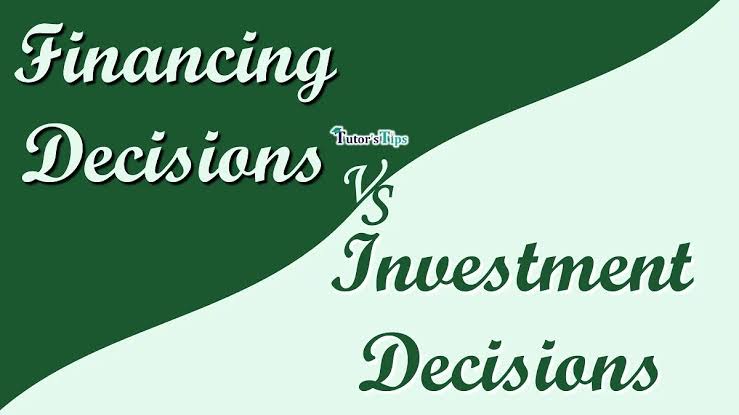Investing vs. Borrowing: Making Wise Financial Decisions for Your Future


Exploring the balance between investing and borrowing is crucial for making informed and strategic financial decisions. Here’s an in-depth discussion on weighing the options of investing versus borrowing and how each choice influences one’s financial future.

Understanding Investing and Borrowing
1. Investing:
- Involves using funds to purchase assets with the aim of generating potential returns over time.
2. Borrowing:
- Acquiring funds from a lender, usually with an interest cost, to meet immediate financial needs.
Assessing the Purpose of Funds
1. Investing Goals:
- Long-term wealth accumulation, retirement planning, and achieving financial milestones.
2. Borrowing Needs:
- Fulfilling immediate financial requirements, such as education, home purchases, or business investments.
Understanding Risk and Returns
1. Investment Risk:
- Volatility and uncertainty in returns; higher potential for growth but with associated market risks.
2. Borrowing Risk:
- Obligation to repay borrowed funds along with interest; failure to do so can impact credit and financial stability.
Analyzing Opportunity Costs
1. Investment Opportunity Cost:
- Funds invested might have the potential to generate returns higher than the borrowing costs.
2. Borrowing Opportunity Cost:
- Interest payments on borrowed funds might limit available resources for future investments.
The Impact of Interest Rates
1. Investing with Low Borrowing Rates:
- Low-cost borrowing may enable leveraging investments, potentially increasing returns.
2. Borrowing at Higher Interest Rates:
- High borrowing costs might diminish returns on investments, impacting overall profitability.
Strategic Borrowing for Investments
1. Leveraging Investment Opportunities:
- Using borrowed funds to amplify investment potential, known as leveraging, with a careful risk assessment.
2. Risk Management in Borrowing:
- Balancing borrowed funds with a solid repayment strategy and risk tolerance in investments.
Long-Term Financial Goals
1. Investing for Long-Term Goals:
- Allocating funds into diverse investment portfolios aligned with long-term financial objectives.
2. Strategic Borrowing for Milestones:
- Borrowing to facilitate key life milestones like homeownership or education with a repayment plan.
Risk Tolerance and Financial Stability
1. Investment Risk Tolerance:
- Evaluating comfort levels with market volatility and risk exposure in investments.
2. Borrowing Capacity:
- Assessing the ability to comfortably manage debt repayments without compromising financial stability.
The Role of Diversification
1. Investment Diversification:
- Spreading investments across various asset classes to mitigate risk and optimize returns.
2. Diverse Borrowing Strategies:
- Exploring multiple borrowing options to diversify debt and manage interest rates.
Balancing Investing and Borrowing
1. Strategic Debt Management:
- Using borrowed funds judiciously to supplement investment strategies while avoiding over-leverage.
2. Sustainable Investing Approach:
- Choosing investments aligned with personal financial goals and risk tolerance for sustainable growth.
Evaluating Opportunity Costs
1. Weighing Investment Returns:
- Assessing potential returns from investments against borrowing costs to make informed decisions.
2. Understanding Borrowing Expenses:
- Considering the total cost of borrowing, including interest rates and associated fees.
Conclusion

The decision between investing and borrowing is a critical aspect of financial planning, directly impacting future wealth and financial stability. While investing offers the potential for growth and wealth accumulation, borrowing facilitates immediate financial needs. Strategic borrowing for investment purposes requires careful consideration of risks, returns, and opportunity costs. It’s crucial to align choices with long-term financial goals, risk tolerance, and the overall financial situation. Balancing investments and borrowing involves a comprehensive understanding of the potential returns from investments against the costs and risks associated with borrowing. Ultimately, striking a balance between investing and borrowing is key to making wise financial decisions that support long-term financial health and growth.


